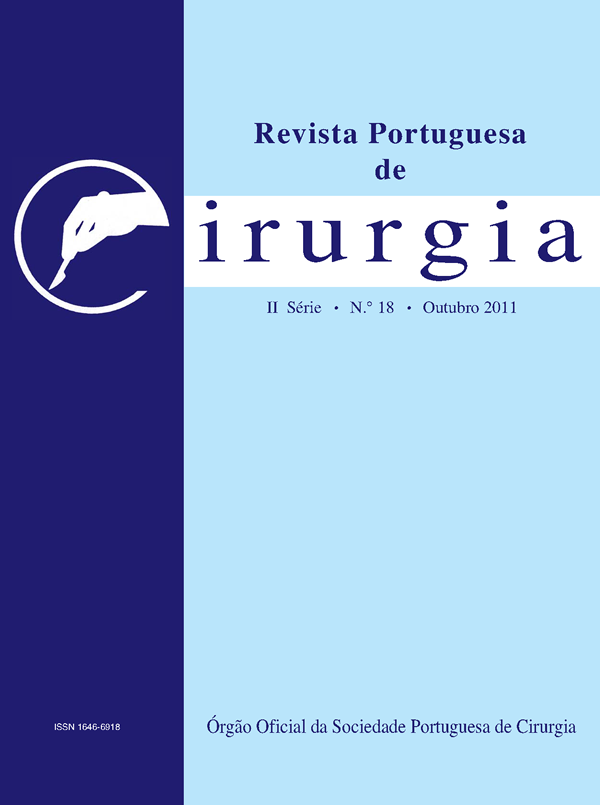Insuficiência Cardíaca, Diarreia e Flushing – Tumor Neuroendócrino?
Abstract
We present the clinical case of a 76 year-old women, who in February 2008 used the emergency department by diarrhea, anorexia, weight loss, dyspnoea, cough, and flushing. Under the etiologic study had an echocardiogram that revealed major tricuspid regurgitation. Because of suspicion of Carcinoid Syndrome performed a thoraco-abdomino-pelvic CT that showed a mass approximately 3,5 cm at the mesentery root. With this image in CT that raised the suspicion of neuroendocrine tumor (NET) and an increased dosage of acid 5-hydroxy-indole acetic the patient made a scintigraphy with OctreoScan that noted a lesion with a similar location to the one detected in CT and another in the liver, both with expression of somatostatin receptors, causing suspicion of TNE. For further diagnostic investigation, the patient underwent endoscopy which did not identify the tumor. After the probable diagnosis of TNE with liver metastasis, was proposed surgery that the patient refused, and initiated therapy with octreotide LAR. After two years of treatment, appealed to the emergency department for abdominal pain, a situation that repeated several times. In January 2010, was hospitalized in the Surgery Department for pain control and re-staging. Accepted surgery, having been identified the tumor, that was located in the ileum and proceeded to resection of lymph node metastasis in the mesentery and liver metastases. Histological examination confirmed neuroendocrine carcinoma of the ileum, well differentiated, with serosa and vascular invasion, were documented 6 metastatic lymph nodes and two liver metastases: pT4p-N1pM1. Repeated OctreoScan scintigraphy in April 2010 that showed no recurrence of the disease. Prevalence of neuroendocrine tumors is increasing, and studies show that it’s difficult to diagnose, but early detection and multi-disciplinary approach help the treatment and improve the quality of patients life.
Keywords: neuroendocrine carcinoma, carcinoid syndrome, octreoscan, octreotide
Downloads
Downloads
Published
Issue
Section
License
Para permitir ao editor a disseminação do trabalho do(s) autor(es) na sua máxima extensão, o(s) autor(es) deverá(ão) assinar uma Declaração de Cedência dos Direitos de Propriedade (Copyright). O acordo de transferência, (Transfer Agreement), transfere a propriedade do artigo do(s) autor(es) para a Sociedade Portuguesa de Cirurgia.
Se o artigo contiver extractos (incluindo ilustrações) de, ou for baseado no todo ou em parte em outros trabalhos com copyright (incluindo, para evitar dúvidas, material de fontes online ou de intranet), o(s) autor(es) tem(êm) de obter, dos proprietários dos respectivos copyrights, autorização escrita para reprodução desses extractos do(s) artigo(s) em todos os territórios e edições e em todos os meios de expressão e línguas. Todas os formulários de autorização devem ser fornecidos aos editores quando da entrega do artigo.



